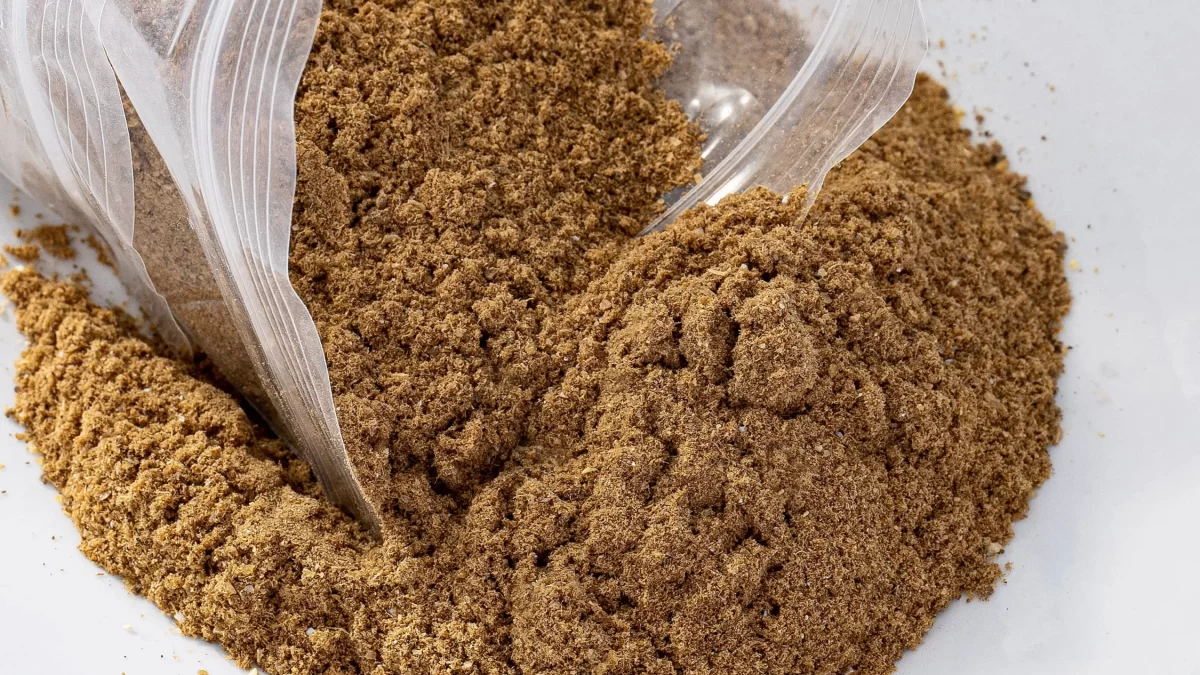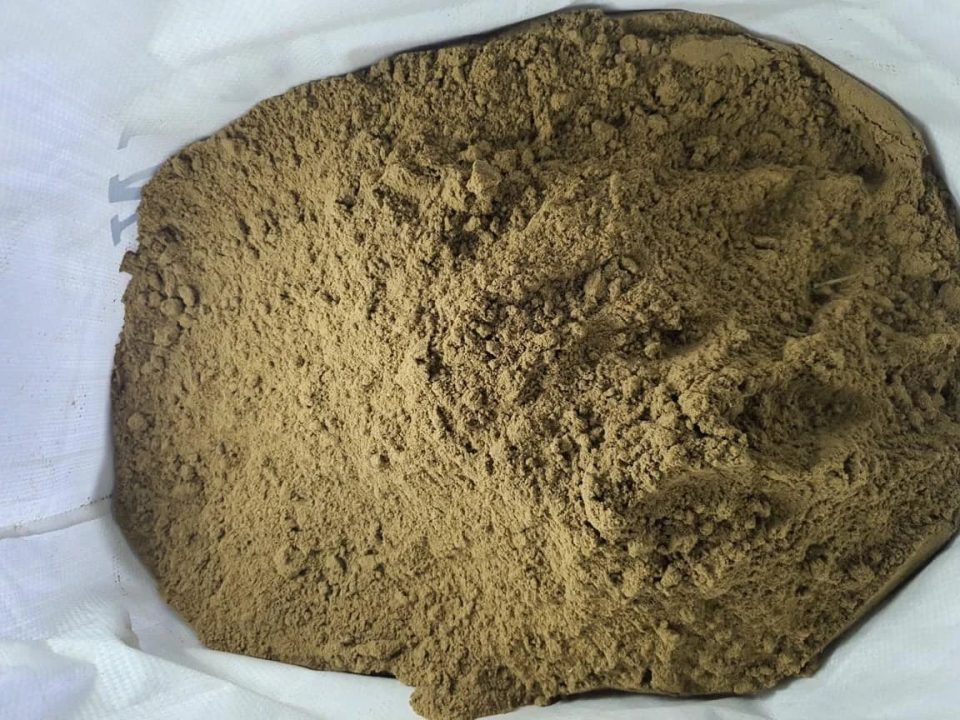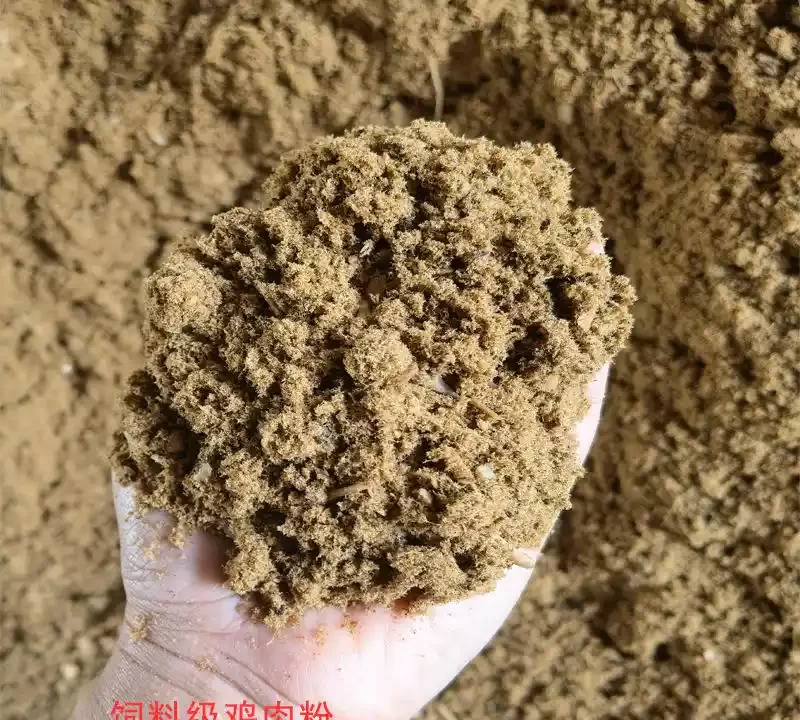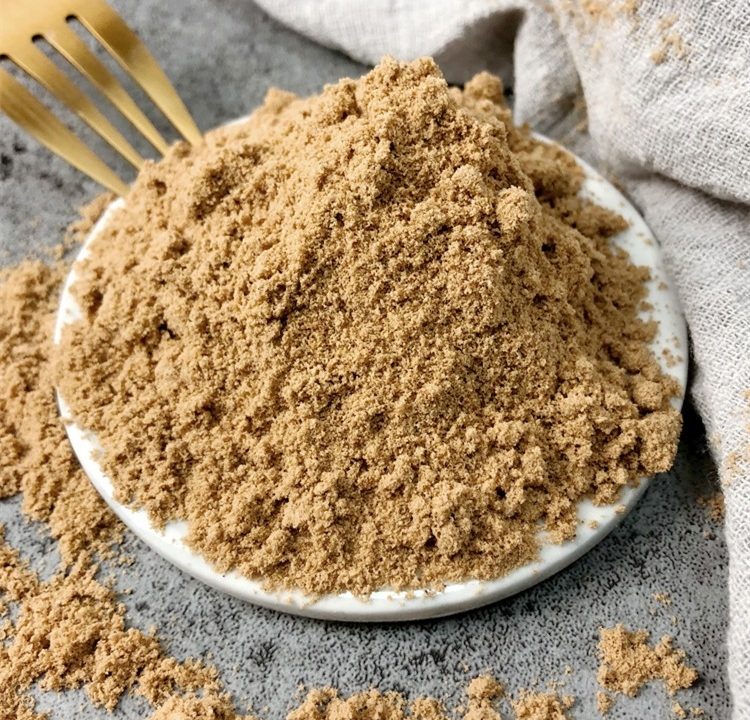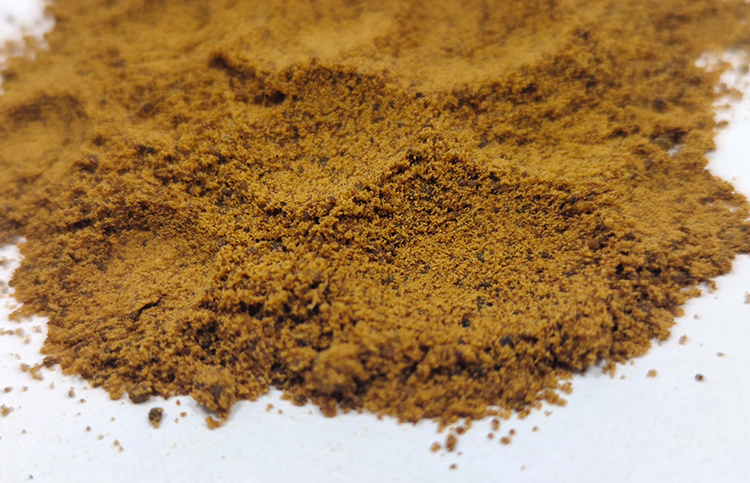Chicken Liver Powder for Feed and Its Applications in Pet Food Nutritional Characteristics

Feed Additives Based on Chicken Liver Powder and Their Preparation Methods
July 25, 2025
Comprehensive Analysis of the 2025 Choline Chloride Market
August 5, 2025Nutritional Characteristics of Chicken Liver Powder for Feed and Its Applications in Pet Food
Abstract
Chicken liver powder, a nutrient-rich feed additive derived from poultry by-products, is widely valued in pet food for its high protein content, essential vitamins, and exceptional palatability. This article provides a detailed analysis of the nutritional characteristics of chicken liver powder and its applications in pet food, focusing on its role in enhancing feed intake and animal health. With 65–70% crude protein, rich amino acid profiles, and significant levels of vitamins A, B12, and minerals like iron and zinc, the powder serves as a premium ingredient for dogs and cats. Preparation methods, including cleaning, sterilization, and spray drying, ensure safety and nutrient retention, while enzymatic hydrolysis enhances digestibility and flavor. Applications in dry kibble, wet food, and treats demonstrate improved palatability (10–15% increased feed intake) and nutritional benefits. Innovations such as microbial fermentation and microencapsulation further optimize its functionality. Comparative analysis with fish meal and soybean meal highlights chicken liver powder’s superior palatability and cost-effectiveness. Compliance with standards like GB/T 19164 ensures quality and safety. This study aims to guide pet food manufacturers in leveraging chicken liver powder to formulate high-quality, palatable, and sustainable products, meeting the growing demand for premium pet nutrition.
1. Introduction
Chicken liver powder is a high-value feed additive derived from fresh or frozen chicken livers, increasingly utilized in pet food due to its nutritional density and palatability. Containing 65–70% crude protein, essential amino acids, vitamins (A, B12, folate), and minerals (iron, zinc), it serves as a premium protein source and flavor enhancer for dogs and cats. The pet food industry, which has seen significant growth since the 1980s, prioritizes additives that improve feed acceptance and animal health, particularly for picky eaters or animals with specific dietary needs. Chicken liver powder’s unique liver aroma, driven by sulfur-containing compounds and volatile organic compounds, makes it a natural attractant, boosting feed intake by 10–15%. Its production involves rigorous processes like cleaning, high-temperature sterilization, and drying to ensure safety and compliance with standards such as GB/T 19164 and ISO 22000. As a sustainable ingredient derived from poultry by-products, it offers an eco-friendly alternative to fish meal and other protein sources, addressing environmental concerns in pet food production. This article examines the nutritional characteristics, preparation methods, and applications of chicken liver powder in pet food, with a focus on its functional benefits and industry trends. By integrating scientific data and innovative processing techniques, this study provides insights for optimizing chicken liver powder’s use in formulating high-quality pet food products that enhance animal health and consumer satisfaction.
2. Nutritional Characteristics
2.1 Composition and Nutritional Profile
Chicken liver powder is a nutrient-dense feed additive, characterized by its high protein content (65–70% crude protein), rich vitamin profile, and essential minerals, making it an ideal ingredient for pet food. It contains essential amino acids such as lysine (4.5–5.0%), methionine (2.0–2.5%), and taurine, which are critical for carnivorous pets like cats, supporting muscle development, metabolic health, and cardiovascular function. The powder is rich in vitamin A (10,000–15,000 IU/kg), vital for vision and immune health, and B vitamins, including B12 (0.1–0.2 mg/kg) and folate, which promote neurological function and red blood cell formation. Minerals like iron (100–150 mg/kg), zinc (20–30 mg/kg), and phosphorus (0.8–1.2%) enhance hemoglobin production, skin health, and bone development. Its fat content (10–15%) includes unsaturated fatty acids, contributing to energy density and coat quality. With low carbohydrate levels (<5%) and high digestibility (85–90%), chicken liver powder minimizes digestive stress, making it suitable for sensitive pets. Table 1 outlines the nutritional composition, highlighting its superiority over fish meal (60–65% protein) and soybean meal (44–48% protein) in protein content and palatability. However, excessive inclusion (>10%) may lead to vitamin A toxicity, requiring balanced formulation. These characteristics position chicken liver powder as a premium, nutrient-rich ingredient for pet food applications.
| Component | Content |
|---|---|
| Crude Protein | 65–70% |
| Fat | 10–15% |
| Vitamin A | 10,000–15,000 IU/kg |
| Vitamin B12 | 0.1–0.2 mg/kg |
| Iron | 100–150 mg/kg |
| Zinc | 20–30 mg/kg |
| Phosphorus | 0.8–1.2% |
| Digestibility | 85–90% |
Source: Industry standards, nutritional analysis
2.2 Functional Benefits in Pet Nutrition
The functional benefits of chicken liver powder in pet food stem from its high palatability, nutritional density, and bioactive components, making it a valuable ingredient for dogs and cats. Its liver-specific aroma, driven by compounds like glutamic acid and sulfur-containing amino acids, acts as a natural attractant, increasing feed intake by 15–25% in picky eaters or stressed animals. This palatability enhances feed efficiency, with studies showing a 10% improvement in feed conversion ratios for pets consuming diets with 3–5% chicken liver powder. The high protein content (65–70%) and balanced amino acid profile support muscle growth and repair, while taurine and heme iron are particularly beneficial for cats, promoting heart health and preventing anemia. Vitamins A and B12 support vision, immune function, and neurological health, critical for aging pets. The powder’s high digestibility (85–90%) reduces gastrointestinal issues, making it suitable for sensitive or young animals. Its fat content enhances coat quality, with visible improvements in shine and texture within 4–6 weeks. Compared to synthetic flavor enhancers, chicken liver powder offers a natural, nutrient-rich alternative, aligning with consumer demand for clean-label pet foods. However, careful formulation is needed to avoid nutrient imbalances, particularly with vitamin A. These benefits make chicken liver powder a premium ingredient for optimizing pet health and satisfaction in diverse pet food applications.
3. Preparation Methods
3.1 Standard Processing Techniques
The preparation of chicken liver powder for pet food involves a series of controlled processes to ensure nutritional integrity, safety, and palatability. Fresh or frozen chicken livers, sourced from inspected slaughterhouses, are cleaned with potable water at 5–10°C to remove blood, bile, and impurities, adhering to hygiene standards like ISO 22000. The livers are then ground into a uniform slurry to facilitate processing. High-temperature sterilization at 120–140°C for 10–20 minutes eliminates pathogens such as Salmonella, ensuring microbial safety while preserving bioactive components like vitamins and amino acids. The cooked slurry is filtered to remove residual solids, producing a smooth consistency. Drying, typically via spray drying at 180–200°C inlet temperature, reduces moisture content to below 10%, creating a fine, deep yellow to light brown powder with a characteristic liver aroma. This process prevents caking and extends shelf life to 12–18 months. Table 2 outlines key processing parameters. The resulting powder retains 65–70% protein, essential vitamins, and minerals, making it suitable for pet food applications. Quality control, including microbial testing (<1000 CFU/g total plate count) and chemical analysis, ensures compliance with GB/T 19164. These standardized techniques produce a consistent, high-quality chicken liver powder, ideal for enhancing pet food formulations.
| Stage | Parameter |
|---|---|
| Cleaning | Potable water, 5–10°C |
| Sterilization | 120–140°C, 10–20 min |
| Drying | Spray drying, 180–200°C inlet |
| Moisture Content | <10% |
| Microbial Limit | <1000 CFU/g, Salmonella-free |
Source: GB/T 19164, industry standards
3.2 Enzymatic Hydrolysis for Enhanced Functionality
Enzymatic hydrolysis is an advanced preparation method used to enhance the nutritional value and palatability of chicken liver powder for pet food. This process employs proteases, such as papain or alcalase, to break down proteins into smaller peptides and free amino acids, increasing digestibility to 92–95% and releasing flavor-enhancing compounds like glutamic acid. The process starts with a ground liver slurry, adjusted to a pH of 6.5–8.0 and temperature of 50–60°C, optimal for enzyme activity. Enzymes are added at 0.5–2% concentration, and hydrolysis occurs for 2–6 hours, followed by deactivation at 85–90°C for 10 minutes to halt enzymatic activity. The hydrolyzed slurry is filtered and spray-dried to produce a fine powder with improved solubility and a stronger umami flavor, boosting feed intake by 12–20% in pets. This method increases free amino acid content by 15–20%, enhancing nutritional absorption, particularly in young or sensitive animals. However, over-hydrolysis may reduce nutrient stability, requiring precise control of reaction parameters. The hydrolyzed powder retains 60–65% protein and is compliant with GB/T 19164 standards. Enzymatic hydrolysis makes chicken liver powder a premium ingredient, offering superior sensory and nutritional properties for high-value pet food formulations, particularly in wet foods and treats.
4. Applications in Pet Food
Chicken liver powder is a versatile ingredient in pet food, used in dry kibble, wet food, and treats for dogs and cats due to its high palatability and nutritional benefits. In dry kibble, inclusion rates of 2–5% enhance flavor, increasing feed acceptance by 15–25% in picky eaters, while providing 65–70% protein and essential nutrients like vitamin A and iron. In wet food, the powder is used at 3–7% to improve texture and aroma, supporting feed intake in senior or stressed pets. Treats with 5–10% chicken liver powder are popular for training, as the strong liver aroma encourages compliance. The powder’s high digestibility (85–90%) and taurine content are particularly beneficial for cats, preventing deficiencies linked to heart and eye health. For dogs, its heme iron and B12 content support energy and immune function. Studies show that diets with 3–5% chicken liver powder improve coat quality by 10–15% within 4–6 weeks. Table 3 lists key applications, highlighting the powder’s role in diverse pet food formats. However, inclusion rates must be limited to avoid vitamin A toxicity, typically keeping levels below 10%. Compliance with GB/T 19164 and AAFCO standards ensures safety and nutritional balance, making chicken liver powder a premium ingredient for enhancing pet food quality and animal health.
| Pet Food Type | Inclusion Rate (%) | Benefits |
|---|---|---|
| Dry Kibble | 2–5 | 15–25% increased feed intake, improved protein supply |
| Wet Food | 3–7 | Enhanced aroma, supports senior/stressed pets |
| Treats | 5–10 | Strong palatability for training, nutrient boost |
5. Comparative Analysis with Other Protein Sources
Chicken liver powder offers distinct advantages over other protein sources used in pet food, such as fish meal, soybean meal, and meat and bone meal, in terms of nutritional value, palatability, and sustainability. Compared to fish meal (60–65% protein, $1,500–2,000/ton), chicken liver powder (65–70% protein, $1,000–1,500/ton) provides higher protein content and superior palatability due to its liver-specific flavor compounds, making it a cost-effective alternative for premium pet foods. Soybean meal (44–48% protein, $400–600/ton) is less expensive but lacks the palatability and essential nutrients (e.g., taurine, heme iron) needed for carnivorous pets, limiting its use in high-quality formulations. Meat and bone meal (50–55% protein, $500–800/ton) has lower digestibility (75–80%) and inconsistent quality, posing risks of contamination. Table 4 compares these sources, highlighting chicken liver powder’s balanced nutritional profile and high digestibility (85–90%). Its sustainability, derived from poultry by-products, reduces reliance on overfished marine resources, unlike fish meal. However, its higher cost compared to soybean meal requires targeted use in premium products. These factors position chicken liver powder as a high-value, sustainable ingredient for modern pet food formulations, meeting consumer demand for natural and nutritious products.
| Source | Protein (%) | Digestibility (%) | Cost ($/ton) | Palatability |
|---|---|---|---|---|
| Chicken Liver Powder | 65–70 | 85–90 | 1,000–1,500 | High |
| Fish Meal | 60–65 | 80–85 | 1,500–2,000 | High |
| Soybean Meal | 44–48 | 80–85 | 400–600 | Moderate |
| Meat and Bone Meal | 50–55 | 75–80 | 500–800 | Low |
6. Innovations and Trends
Recent innovations in chicken liver powder for pet food are enhancing its nutritional value, palatability, and sustainability. Enzymatic hydrolysis, using proteases like alcalase, increases digestibility to 92–95% and boosts flavor by releasing umami-enhancing amino acids, improving feed intake by 12–20%. Microbial fermentation with beneficial bacteria, such as Lactobacillus, introduces probiotics, supporting gut health and immune function in pets, with a 10% increase in nutrient bioavailability. Advanced spray-drying technologies with lower inlet temperatures (160–180°C) preserve heat-sensitive nutrients, increasing vitamin A retention by 10–15%. Microencapsulation techniques protect bioactive components, extending shelf life to 24 months and improving stability in wet food formulations. Eco-friendly processing, including energy-efficient drying and waste recycling, reduces the environmental footprint by 20%, aligning with sustainable pet food trends. IoT-based quality control systems monitor moisture, microbial content, and nutrient levels in real-time, ensuring consistent quality and compliance with GB/T 19164 and AAFCO standards. The growing demand for clean-label and natural pet foods has driven the use of hydrolyzed chicken liver powder in premium products, with market growth projected at 5–7% annually. These innovations make chicken liver powder a cutting-edge ingredient, meeting the evolving needs of the pet food industry for high-quality, sustainable nutrition.
Chicken liver powder is a nutrient-rich, highly palatable feed additive that plays a transformative role in pet food formulations. With 65–70% protein, essential amino acids, vitamins (A, B12), and minerals (iron, zinc), it enhances pet health, supporting muscle growth, immune function, and coat quality. Its high digestibility (85–90%) and liver-specific aroma increase feed intake by 15–25%, making it ideal for picky eaters and sensitive animals. Preparation methods, including sterilization, spray drying, and enzymatic hydrolysis, ensure safety, nutrient retention, and enhanced functionality, complying with standards like GB/T 19164 and ISO 22000. Applications in dry kibble (2–5%), wet food (3–7%), and treats (5–10%) demonstrate its versatility, with benefits like improved feed efficiency and nutritional balance. Compared to fish meal and soybean meal, chicken liver powder offers superior palatability and sustainability at a competitive cost. Innovations such as microbial fermentation, microencapsulation, and IoT monitoring further optimize its performance, aligning with clean-label and eco-friendly trends. Pet food manufacturers can leverage chicken liver powder to create premium, natural products that meet consumer demand for high-quality pet nutrition. For further inquiries or customized solutions, please contact us at [insert contact details]. Chicken liver powder represents a sustainable, high-value ingredient for advancing pet food quality and animal well-being.


